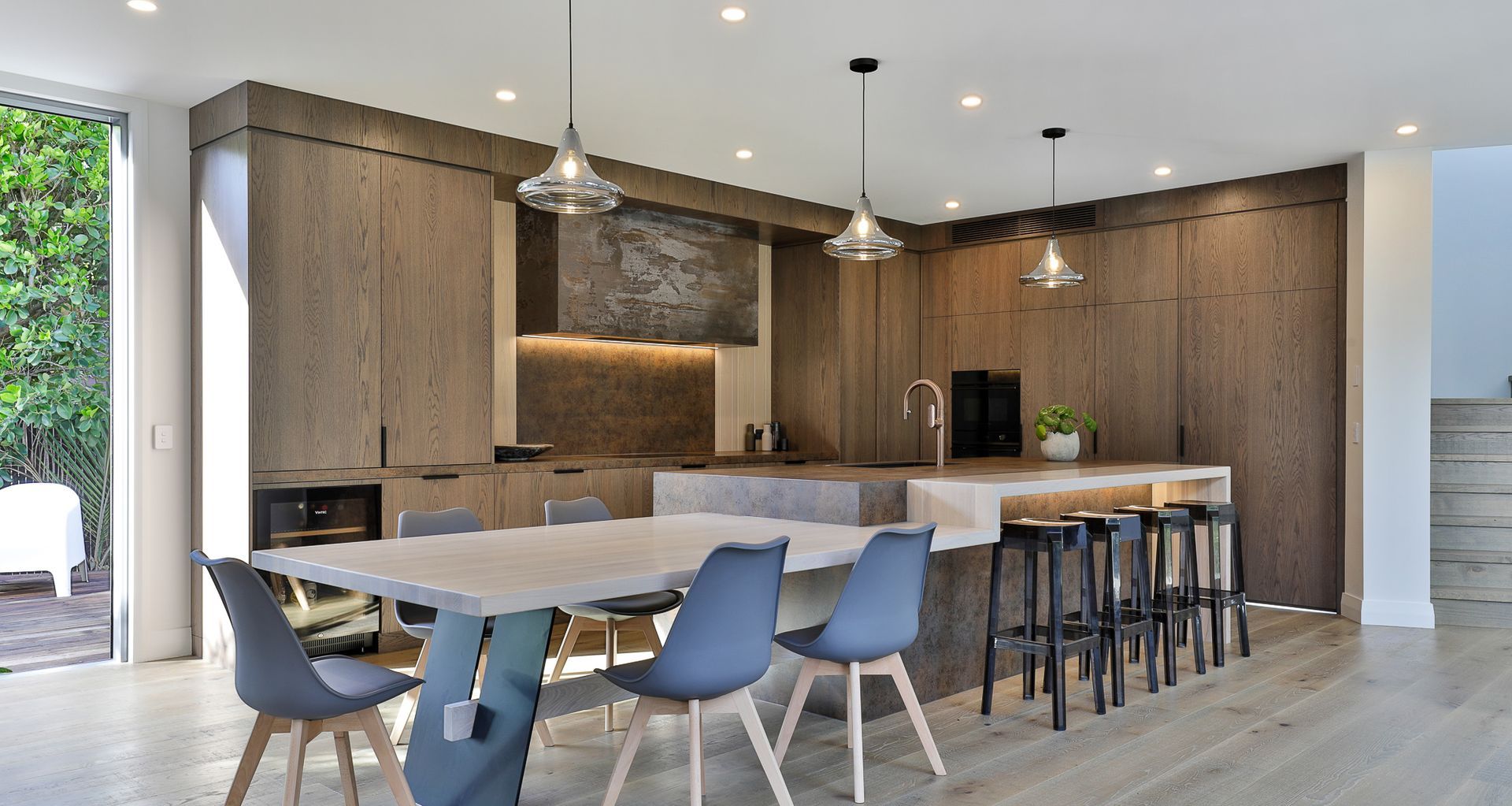Slice of Heaven
Written by
13 October 2021
•
5 min read

The introduction of Prime Toitū Veneer panels, which faithfully emulate the natural look of solid timber, offers architects, designers and specifiers an interesting alternative to the extensive range of clean-lined veneer panels currently available from Prime Panels.
This new range of panels uses mismatched leaves of veneer in a stunning planked effect, and it includes six native timber options, along with American white oak, macrocarpa and American walnut, says Veneer Category Manager Johnny Dobbyn.
A self-confessed ‘old woodie’ and furniture-maker by trade, Johnny says that New Zealand is already known worldwide for producing extremely clean grades of veneer and timber. “Our traditional look has always been to book-match [our panels] with a repetitive pattern, using tight, clean-growth timber. That look will always be there, but this process only uses the top 10 per cent of the tree—the best grades possible,” he explains.
“With the introduction of Toitū, it adds a whole new level of efficiency by using even more of the tree, and at the same time celebrating the look of the whole tree, with all its complex colours and textures.”
To create a traditional veneer, the tree is cut, then sliced very thinly and made into ‘layons’, which goes more than 20 times further than a solid piece of timber. Prime Toitū Veneer is even more sustainable because it uses more of the tree, showing greater respect or mana to the whole tree, which is fantastic, says Johnny.

Prime Toitū Veneer: recreating the look of solid timber
The name Toitū was the result of a brainstorm at the company’s sales conference and was enthusiastically supported by the company’s manufacturing manager and a key account manager who represent different iwi – and ensured there was consultation with iwi around its usage in this context. Toitū has several interpretations, including 'enduring', 'untouched', 'kept pure', 'protected' – and also 'sustainable'.
"This new range of veneer panels offers a different look for our local architects, designers and end-users. Each plank of Toitū is different. If you look at the sarking or timber wall cladding in a hundred-year-old house, every piece is slightly different, so that’s the kind of look you will achieve using Toitū,” says Johnny.
"Each project will look different, a one-off—a mismatch of different boards, either quarter or crown cut, in different colours and different widths, but all within the individual look of that species—like all of the colours of the forest floor.”
Johnny is keen to point out that Prime Panels’ ‘standard’ range is still available for those who want a more uniform, matched look—for smaller projects, such as kitchen or bathroom cabinetry. But for wall or ceiling panelling on larger projects, such as commercial interiors, foyers, receptions, restaurants, etc, Toitū offers a fresh and more natural look where the whole tree, with its full range of colours and grains, can be celebrated.
"We are not replacing our ranges of book-matched veneers; we are simply adding an option for designers or architects, who are looking for something a little bit different."

Prime Panels: designed to inspire
With finite resources and increasing supply chain issues creating very competitive and increasingly expensive markets overseas, Johnny says that it makes total sense to harvest and manufacture as much as we can from the resources we have here in New Zealand. He also believes there's a new crop of architects who are looking to embrace and show off our native timbers—not just as a processed, book-matched finish, but also in its more random and natural form as individual planks and boards, with all the variety that delivers.
“Another issue with using solid timber is that there are limitations to the size and shape of the boards you can produce with certain species—normally six-times the width to the thickness is as wide as you can go,” he explains. “You can’t run them wide and thin, for example, because the timber itself is not stable enough. Whereas with veneer, there is not that restriction.”
MDF is a much more stable and even substrate and is also more cost-effective than using solid wood—depending on the species, three to five times cheaper per square metre. Plus, the install costs are also more affordable with manufactured boards, says Johnny.
“Since coming on board with Prime Panels, I’ve been continuing my journey of sustainable timber—and loving the whole idea of stretching that resource and showing respect to the tree—and also celebrating our native species. Bringing in a truly natural look into the interior of a building is just good for the soul.
"Also, something that I'm really proud of, is that all of our Toitū veneers are a part of our world-leading 'Track my Tree' initiative, which offers complete transparency over the timber from the tree to our veneer press.
"Each veneer panel has a Track my Tree code affixed to it which includes, among other information, the relevant MPI permit for sustainable harvest, the source type for the tree and Google map coordinates for its location."
Johnny adds that Prime Panels' Track my Tree initiative has just been announced as a finalist in the Sustainable Business Awards.
Learn more about the range of native timber veneers available for your next project.